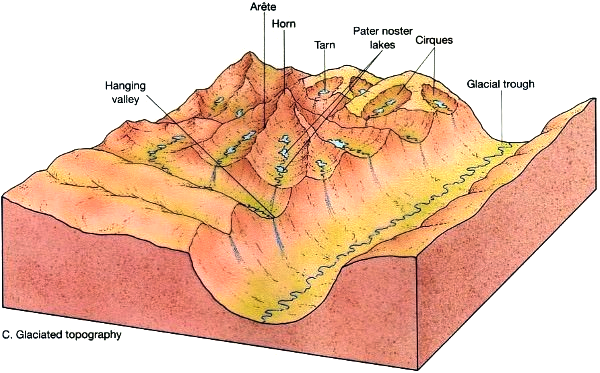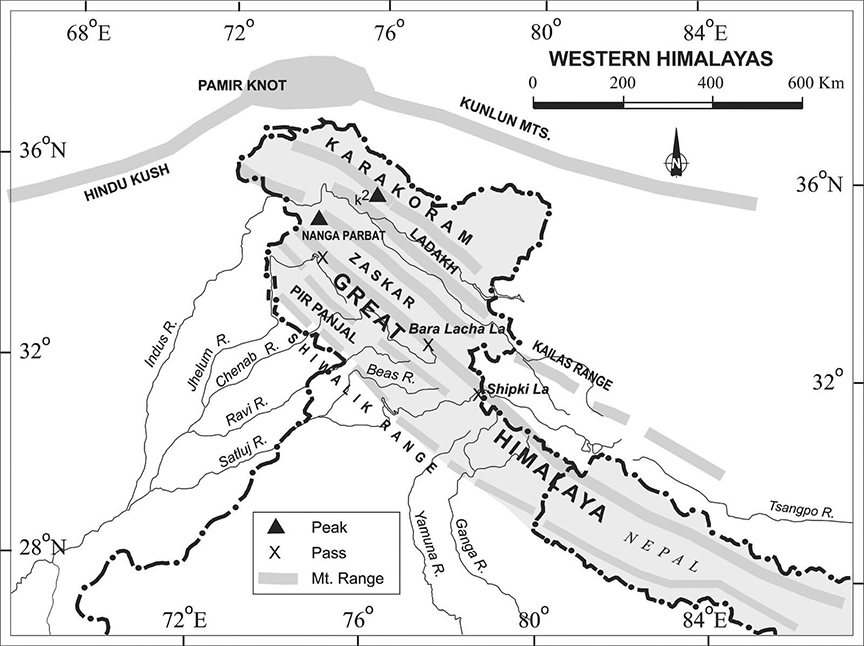Retreat of Glaciers in Ladakh | 14 Aug 2021
Why in News
According to a recent study by the Wadia Institute of Himalayan Geology (WIHG), the Pensilungpa Glacier located in Ladakh’s Zanskar Valley is retreating due to increase in temperature and decrease in precipitation during winters.
- This study assesses the impact of climate change on glaciers. Earlier, the UNDP (United Nations Development Programme) also assessed that the Hindu Kush Himalayan (HKH) mountain ranges could lose up to two-third of its ice by 2100.
- WIHG is an autonomous body under the Department of Science and Technology located in Dehradun, Uttarakhand.
Key Points
- Findings:
- Rate of Decline:
- The glacier is now retreating at an average rate of 6.7 plus/minus 3 metre per annum.
- Glaciers may retreat when their ice melts more quickly than snowfall can accumulate and form new glacial ice.
- Debris Cover:
- There is a significant influence of debris cover on the mass balance and retreat of the glacier's endpoint, especially in summer.
- Furthermore, the mass balance data for the three years (2016–2019) showed a negative trend with a small accumulation area ratio.
- Mass balance of the glacier is the difference between the snow accumulated in the winter and the snow and ice melted over the summer.
- There is a significant influence of debris cover on the mass balance and retreat of the glacier's endpoint, especially in summer.
- Impact of rise in the Air Temperature:
- Due to continuous rise in the air temperature in line with the global trend, the melting would increase, and it is possible that the precipitation of summer periods at higher altitudes will change from snow to rain, and that may influence the summer and winter pattern.
- Rate of Decline:
- Impact:
- Impact on Human Life:
- It will impact the water, food, energy security and agriculture, including soil loss due to soil erosion, landslides and floods.
- Glacial lakes may also form due to the accumulation of melted ice, which may result in Glacial Lake Outburst Floods (GLOF) and even shifting global climate by dumping freshwater into the oceans and so altering their circulation.
- Leaves Debris:
- Glacial retreat leaves boulders and masses of scraped-together rocky debris and soil called glacial moraines.
- Impact on Human Life:
- Initiative for Himalayan Ecosystem:
- National Mission for Sustaining the Himalayan Ecosystem: It is one of the 8 national missions under the National Action Plan on Climate Change (NAPCC).
Glacier
- About:
- It is a large, perennial accumulation of crystalline ice, snow, rock, sediment, and water that originates on land and moves down slope under the influence of its own weight and gravity. They are sensitive indicators of changing climate.
- Out of total water on Earth, 2.1% is in glaciers while 97.2% is in the oceans and inland seas.
- Condition of glacier formation:
- Mean annual temperatures are close to the freezing point.
- Winter precipitation produces significant accumulations of snow.
- Temperatures throughout the rest of the year do not result in the complete loss of the previous winter’s snow accumulation.
- Glacial Landforms:
Zanskar Valley
- It is a semi-arid region situated in the northern flank of the Great Himalayas at an altitude of more than 13 thousand feet.
- The Zanskar Range separates Zanskar from Ladakh and the average height of the Zanskar Range is about 6,000 m.
- This mountain range acts as a climatic barrier protecting Ladakh and Zanskar from most of the monsoon, resulting in a pleasantly warm and dry climate in the summer.
- Marbal Pass, Zojila Pass in the extreme northwest of Zanskar range are two notable passes in the region.
- Many rivers start in different branches of this range flow northward, and join the great Indus River. These rivers include Hanle River, Khurna River, Zanskar River, Suru River (Indus), and Shingo River.
- The Zanskar river then takes a north-eastern course until it joins the Indus in Ladakh.


